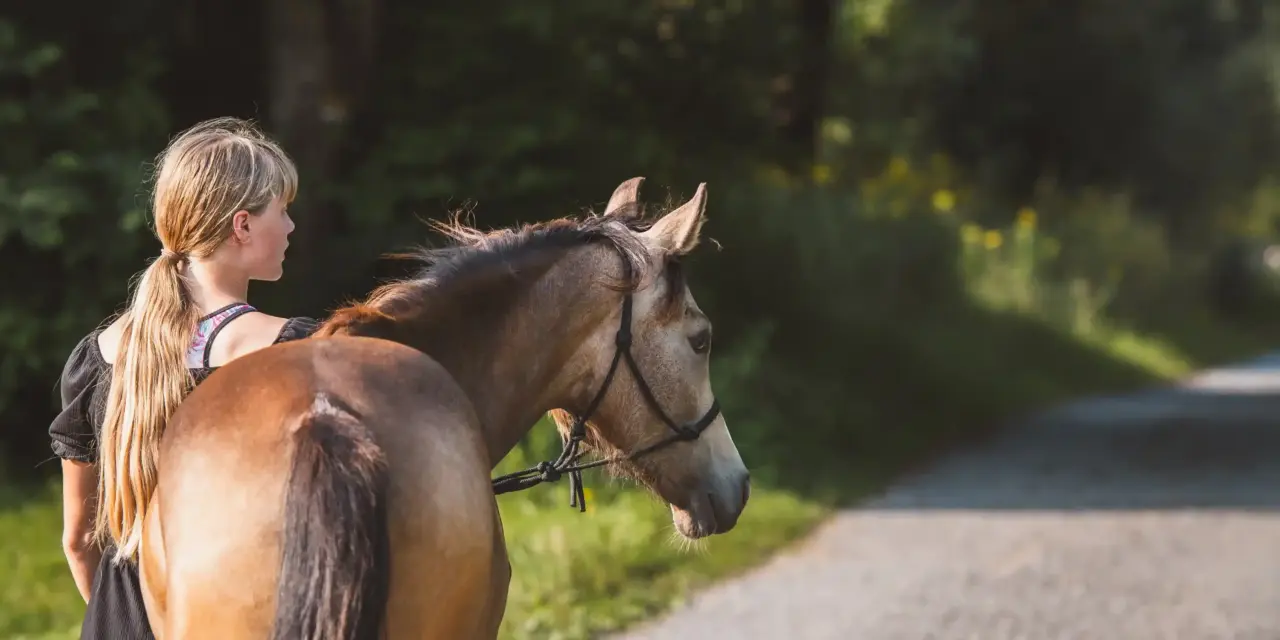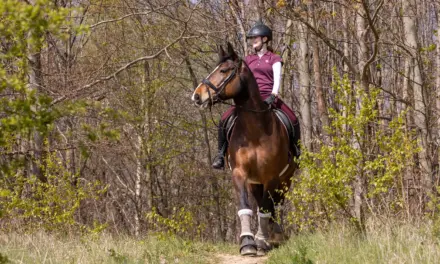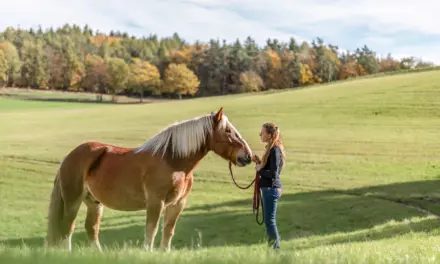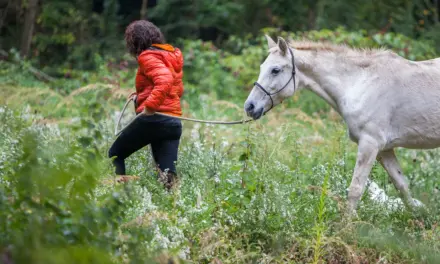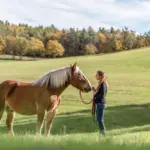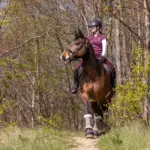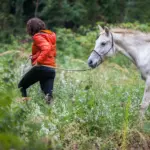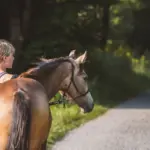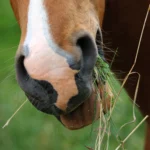How to help your horse explore the big wide world safely
Key Points at a Glance
- The first trip away from the yard is a milestone in a horse’s training and requires careful preparation
- Groundwork and trust-building at the yard lay the foundation for relaxed hacking experiences
- The right equipment and experienced company greatly increase safety
- Being able to read your horse’s body language and signs of stress is key to success
- Short distances and positive experiences build lasting trust
- “Slow and steady” is the key when it comes to a horse’s first experiences out hacking
Why the first ride out is so important
The moment a horse leaves the familiar boundaries of the yard for the first time marks a key turning point in its training. This step requires not only physical readiness, but above all, mental maturity. The familiar surroundings with their well-known sounds, smells and structures suddenly give way to a world full of new impressions.
For the horse, this represents a significant challenge. As a prey animal, the horse is naturally inclined to view anything unfamiliar as a potential threat. A change of environment activates all the senses and can trigger stress. At the same time, this first outing offers a valuable opportunity to deepen the bond between horse and rider and to gain important learning experiences.
Good preparation begins at home
Before the first adventure beyond the yard begins, a solid foundation should be laid through systematic groundwork. A horse that has already learned to trust its handler and respond to clear guidance is far more likely to stay cooperative in unfamiliar situations.
Preparation includes simulating different environmental stimuli within the familiar surroundings of the yard. Flapping objects, unfamiliar sounds or varied surfaces can be introduced in a playful, gradual way. Through this, the horse learns that new things aren’t automatically dangerous – and that their handler can be trusted.
It’s especially valuable if the horse is already familiar with being led from both sides and walks calmly either to the left or right of the handler. This flexibility proves extremely useful when out and about, for instance when needing to change sides on the road
The first steps into the unknown
For the first outing, familiar company is highly recommended. This could be an experienced person who knows the horse well – or ideally, a calm, confident horse that’s used to hacking out. The latter offers a sense of security through its calm demeanour and acts as a role model for the less experienced horse.
The first routes should be deliberately kept short. A relaxed 15-minute walk is far more valuable than a 30-minute outing filled with stress and tension. Familiar tracks that the horse may already have seen from the yard or paddock make an ideal starting point.
The pace should be calm and steady. Sudden movements or nervous behaviour are quickly picked up by the horse. In contrast, a confident yet relaxed posture from the handler conveys reassurance and clear leadership.
Understanding the language of the horse
During a horse’s first hack, it’s essential to observe body language closely. A raised head, tense muscles, flared nostrils or anxious fidgeting are clear signs of stress or uncertainty.
A relaxed horse shows a natural head carriage, soft ear position and steady, rhythmical movement. It looks around its surroundings without becoming overly tense and, ideally, will blow out softly through the nostrils from time to time – a clear sign of relaxation. Interestingly, many horses find it calming when the handler mimics this sound while exhaling and consciously lets their shoulders drop.
At the first signs of stress, it’s important to slow the pace or even come to a halt. Often, simply giving the horse time to observe and process the situation can be enough. Putting the horse under pressure at this stage can seriously damage trust and may even create dangerous situations.
Prioritising safety: choosing the right gear
Choosing the right equipment can make the difference between a successful first outing and a stressful one. A well-fitting rope halter or cavesson offers far more control than a basic head collar or a lead rope around the neck. It’s also important that the horse is already familiar with the equipment – the first outing is not the time to try something new.
A lead rope of suitable length (around 2–3 metres) allows the horse to carry its head naturally without losing connection to the handler. Ropes that are too short can be pulled from the hand if the horse suddenly stops or throws its head up, while ropes that are too long risk getting tangled. It’s also important that the rope has a strong, secure clip – not a so-called panic hook, which often opens at exactly the wrong moment.
It’s advisable for the handler to wear a safety vest, especially if the horse may still react unpredictably. Sturdy footwear with good grip is essential, as you will be dealing with a variety of surfaces – and an excitable horse can easily step on your foot. In the UK, wearing light-coloured or reflective clothing is also highly recommended, as it significantly improves visibility near roads and is considered good practice for anyone out and about with horses.
Building confidence without pushing too far
The main goal of a horse’s first hack should be to create positive experiences. Every relaxed minute, every curious glance at unfamiliar objects, and every calm step forward is a success. An occasional treat can help reinforce these moments – especially when the horse bravely tackles “scary” challenges like the aggressive-looking park bench, the lurking plastic bag in the bushes, or the suspicious cyclist. These small victories form the foundation for all future adventures beyond the yard.
Pushing too far, too soon can undo weeks of progress. A horse that has a frightening or overwhelming experience on its first outing may associate hacks with fear and react with resistance or panic in the future. That’s why it’s always better to shorten or even end the outing if your horse shows signs of struggling. Turning back and returning to the yard isn’t a failure – it’s a wise and thoughtful decision that protects trust and confidence.
Small rewards can help strengthen positive associations. A short grazing break in a pleasant spot, soothing words, or a scratch at the withers show the horse that it’s doing well and can relax.
Taking it slow is the key to long-term success
Nowhere is the saying “slow and steady” more true than when introducing a horse to hacking out for the first time. Taking things slowly at the start might feel like you’re holding back, but in the long run, it’s the most reliable way to build a calm, confident partner for safe and enjoyable outings.
Small, consistent steps lay a solid foundation to build on later. A horse that has learned to face new situations with curiosity rather than fear is far more likely to stay cooperative, even when things get more challenging.
The time invested in these first steps pays off for years to come. It forms the foundation for relaxed hacks, successful outings to competitions, and a trusting partnership between horse and rider. That first step into the unknown isn’t just a milestone in training – it marks the beginning of a shared journey of adventures.

